Elephants are well-known animals for very many things, most famously - being the largest land animal on earth. While they are now only found in some select places, elephants used to be widely spread across Africa and Asia in great numbers.
In this article, we will look at all the fun and interesting facts that make elephants such lovely and sweet animals - worth your visit and everyone's protection.
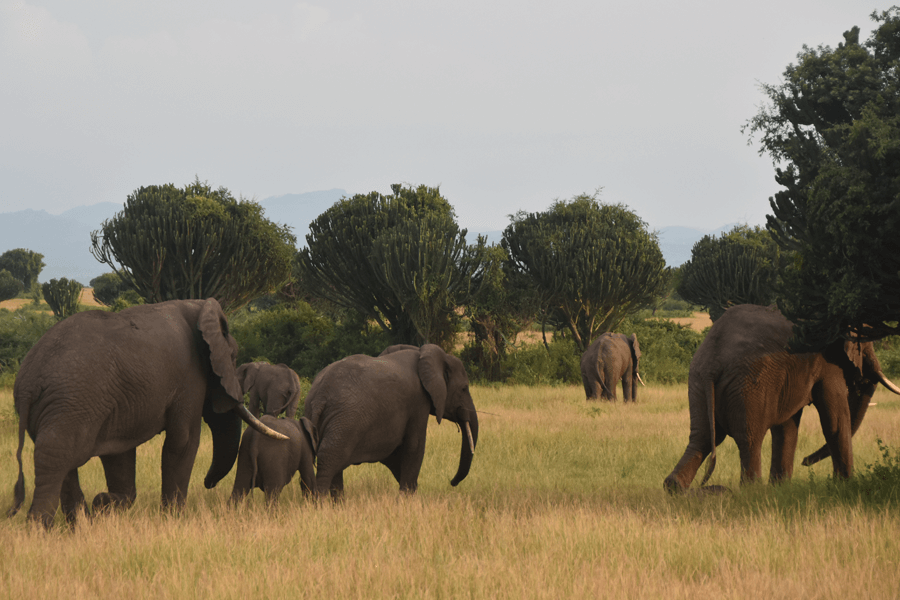
There are 2 major recognized species of elephants, the African elephant, and the Asian elephant. While most of the things are related, we'll focus on the African elephants for this article.
This is because you can be able to see these African elephants in the wild while on an African safari.
Interesting Facts About Elephants
1. How Many Kinds Of African Elephants Are There?
There are 2 subspecies of the African elephant. The African Bush (savannah) elephant and the African forest Elephant.
The African Bush Elephant is bigger and lives in areas of open savannah and semi-arid grasslands, while the forest elephant lives in forested areas. The African bush elephant has bigger and outward-pointing tusks while the African forest elephant has downward-pointing tusks - to easily navigate thick forest cover.
Related article: Differences between African Bush and African Forest elephants
2. Where Do African Elephants Live?
African Elephants can be found in many national parks and game reserves in Eastern, Central, Western, and Southern Africa.
Central and western African countries have more African Forest Elephants in their forests, while Eastern and Southern African countries have African Bush Elephants dominating their savannahs.
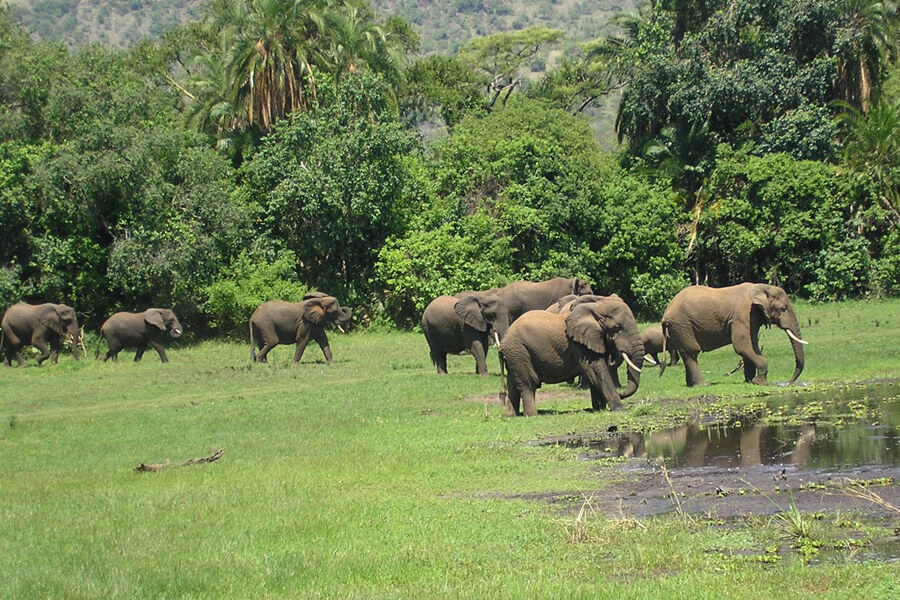
3. Which Countries Can Be Visited For Elephants?
Since Elephants do have a wide range, most of sub-Saharan Africa can be visited to see elephants.
For African Bush Elephants, you can visit any of these countries such as Uganda, Kenya, Tanzania, South Africa, Namibia, Botswana, Zambia, Zimbabwe, and Angola.
To see the African Forest Elephants, you can visit such countries as Ghana, Ivory Coast, Togo, Cameroon, DR Congo, Uganda, and Gabon.
Related Article: Where to see African Elephants in the wild
4. Is The Elephant's Trunk Its Nose?
The elephant's trunk is an extension of its nose and upper lip. This means that the trunk is the nostril of an elephant.
As far as its usefulness, the trunk is so much more than a nose.
5. What Is Special About The Trunk Of An Elephant?
The trunk is a highly sensitive and functional organ, thought to have around 60,000 muscles. An elephant's trunk is strong enough to lift 3% of an elephant's weight with ease.
The trunk is also useful in drinking water, eating, dusting, smelling, as well as defending the elephant.
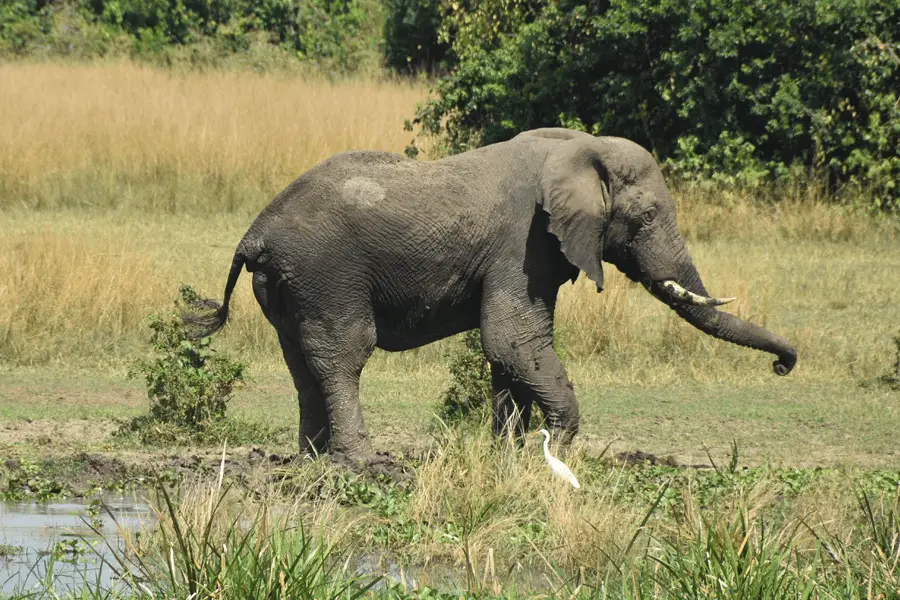
6. Why Do Elephants Have Tusks?
Elephants mostly use their tusks to dig for roots and strip bark off trees for food. They even have a dominant tusk which is most often used - the same way you can be left-handed or right-handed. The dominant tusk will be slightly shorter - from wear.
Elephant tusks are also used for fighting - especially for mates as well as protecting themselves from other predators in the wild.
7. How Big Are Elephant Tusks?
An elephant's tusks can weigh up to 45 kg (99 lb) and be as tall as 2.4 meters (8 ft) each. The biggest elephant tusks will be found among the African bush elephant subspecies.
The tusks keep growing throughout the lifetime of an elephant and you will see these massive tusks on very mature individuals.
8. Why Do Elephants Have Big Ears?
The large ears of an elephant are useful in cooling down the elephant's huge body. Flapping the big ears creates an air current and exposes the large blood vessels on the inner sides of the ears. This increases heat loss and thus regulates body temperature.

9. How Big Are Elephant Ears?
African elephants have massive ears compared to Asian elephants. The ears of an adult African elephant can grow to be as large as 2 meters by 1.5 meters (6.6ft x 4.9ft).
For context, this is comparable to the size of a double mattress much as the ears are not rectangular. You can cover someone with the ear of an elephant.
10. Do Elephants Have Thick Skin?
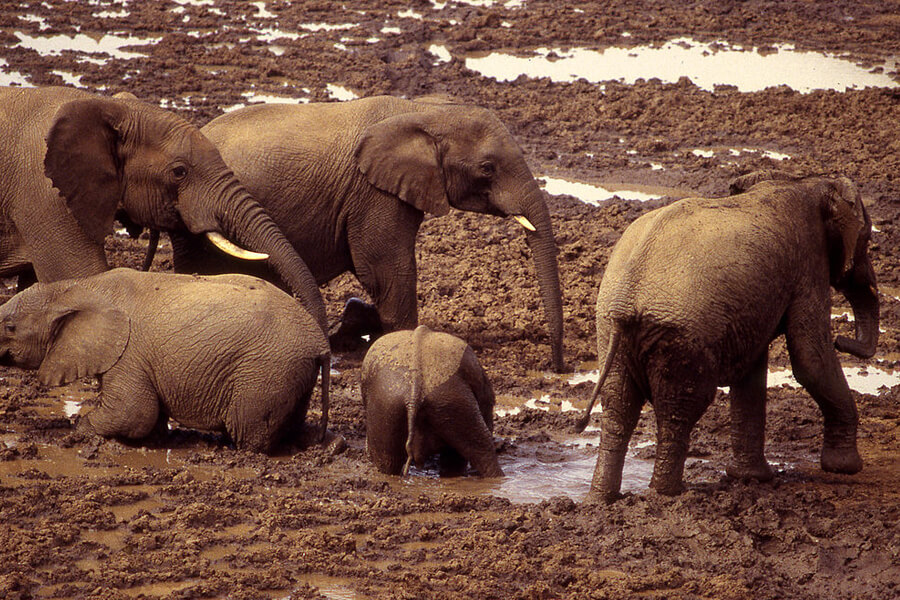
Elephants have very thick skin, around 1.2 inches deep. While elephants do have thick skin, it is very sensitive to the hot sun and insect bites. This is why mud baths are important for elephants since they keep the skin moist, and cooler, and the insects away.
11. How Much Does An Elephant Weigh?
The African bush elephant can weigh up to an average of 6,000 kg (13,300 lb). The adult male (bull) elephants weigh more than the females which weigh up to just above 3,200 kg (7000 lb).
The largest recorded individual African elephant is estimated to have weighed more than 10,000 kg (22,000 lb).
12. How Tall Is An Elephant?
An adult male (bull) elephant will be as tall as 4 meters (13 ft ) at the shoulder while a female will be around 2.6 meters (8.5 ft). Generally, male elephants are bigger than female ones.
The tallest recorded elephant stood at 4.21 meters (13.8 ft) at the shoulder.
13. How Much Does An Elephant Eat?
An adult elephant eats up to 150 kg (330 lb) of food per day and drinks around 200 litres (52 gallons) of water. It would take an average human around 2 months to consume this same amount of food.
14. What Do Elephants Eat?
Elephants are herbivores and eat grasses, creepers, and herbs. During the dry season, the diet can be supplemented by leaves, roots, and barks.
Related article: What do African elephants eat in the wild?
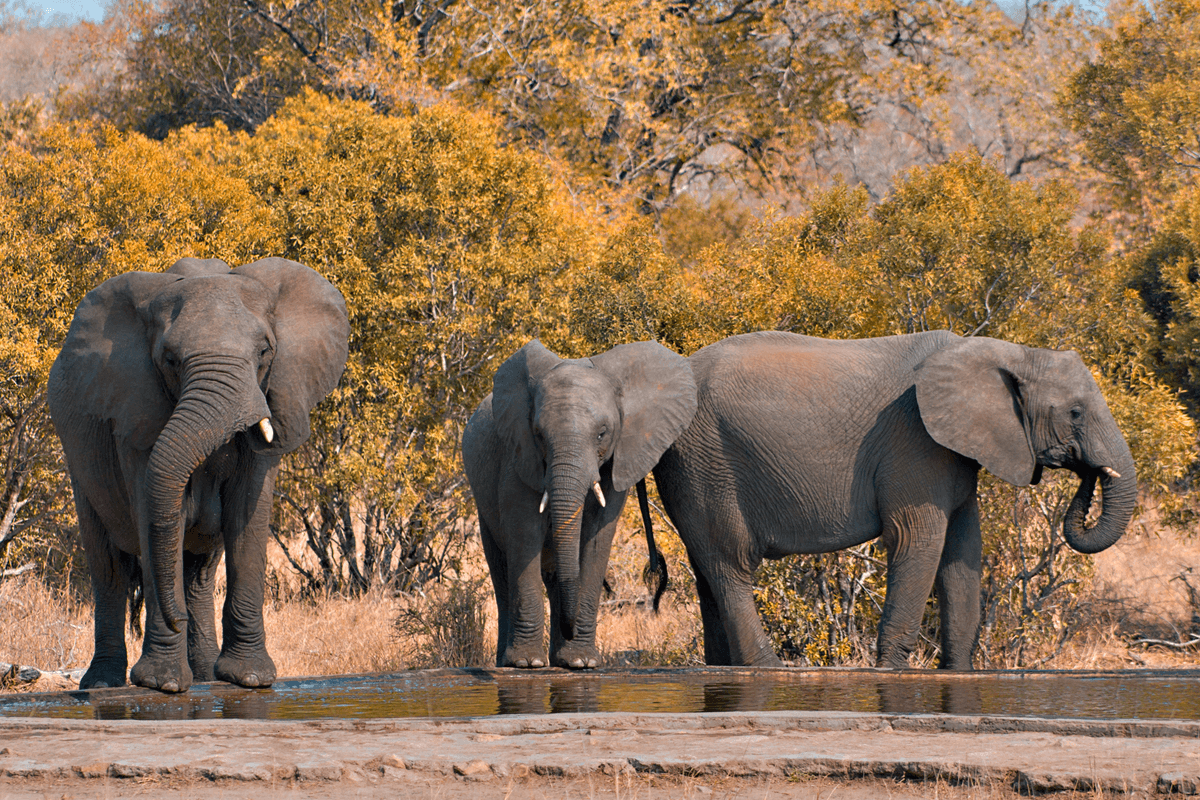
15. How Do Elephants Give Birth?
Elephants are mammals and therefore the females (cows) give birth to their young ones. Most elephants in the wild give birth at night and give birth to one calf.
Young calves suckle their mother's milk for at least 2 - 3 years until their tusks grow and get in the way.
16. How Long Is Elephant Pregnancy?
In African Elephants (Bush and forest elephants) the gestation period lasts 22 months. Fertile female elephants give birth every 3 to 5 years.
Adult female elephants are most fertile between the ages of 25 and 45 years.
17. How Big Is A Newborn Elephant Calf?
A newborn elephant calf is often around 0.8 meters (2.6 ft) tall and 120 kg (260 lb) in weight. A newborn elephant can stand in less than 30 minutes and can walk within the first hour.
18. Are Elephants Intelligent?
Elephants are highly intelligent animals. They have been observed to show behaviours related to grief, compassion, cooperation, self-awareness, and memory.
The structure of the elephant's brain is similar to that of humans, some apes as well as some dolphin species. Elephants have the largest brains of any land animal and can weigh around 5 kg (11 lb).
19. How Long Do Elephants Live In The Wild?
Elephants have long lifespans and can often live to an average of 60 - 65 years in the wilderness. In captivity (zoo) elephants will live longer and can very easily make 70 years.
Besides poaching, adult elephants have fewer threats and usually die of starvation after losing their final set of teeth.
Related article: Comparing the life span of African animals
20. Conservation Status Of Elephants.

According to the International Union for the Conservation of Nature (IUCN), elephants are under serious threat and are considered endangered. In March 2021 the UICN declared, the African Bush elephants as Endangered while the African forest elephants are now Critically Endangered.
The populations of all the elephant species are decreasing, and this has led to the recent classification from vulnerable to endangered.
21. Threats To Elephants
The major threats to elephants are habitat loss and poaching for ivory. Increasing populations mean that human activity has encroached on land that was formerly used by elephants.
Besides habitat loss and poaching, adult elephants have very little threat in the wild.
While elephants are generally calm animals, they get their deserved respect in the wild because they are very big and strong. An elephant could easily flip a hippo on its back with its versatile trunk.
This is why Elephants are part of the big 5 African safari animals - they don't mess around.
22. Why Are Elephants Poached?
Elephants are majorly poached for the ivory in their tusks. This is done for the illegal underground trade in animal parts, where the demand for ivory is high.
The meat of the killed elephants can be eaten or sold in the same black markets as the ivory but this is not the goal for poaching.
The laws against trade in parts of protected animals are very strict in almost all countries, and we advise you to steer clear of any wrongdoing concerning elephants or any other animals.
Final Thoughts
Elephants are fascinating animals whose presence is always felt and respected in the wild. From their physical attributes to their graceful nature, we love everything about elephants and hope that this article has started the same feeling in you.
We don't like the fact that the numbers are decreasing, but we hope that our small role in tourism will lead to the protection of these beautiful giants.
We are very hopeful that elephants will still inhabit the earth because it is equally theirs and better with them in it.
Share this article on your social networks and spread the love for elephants - and their homes.
